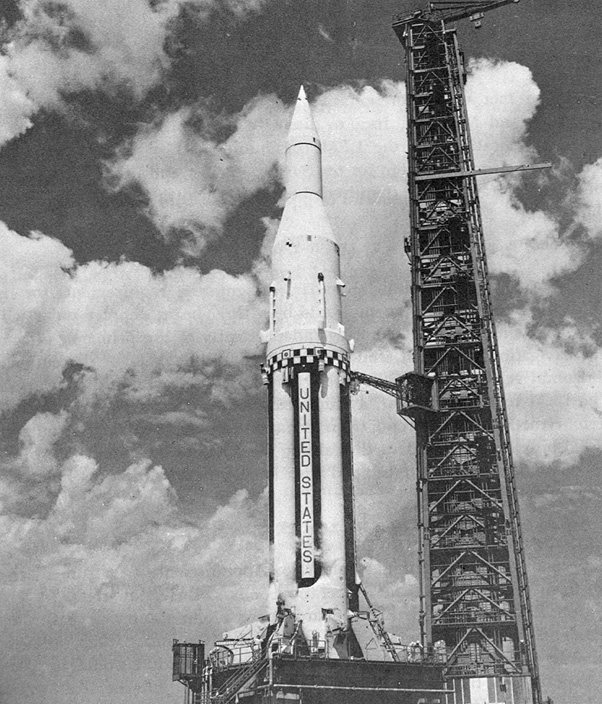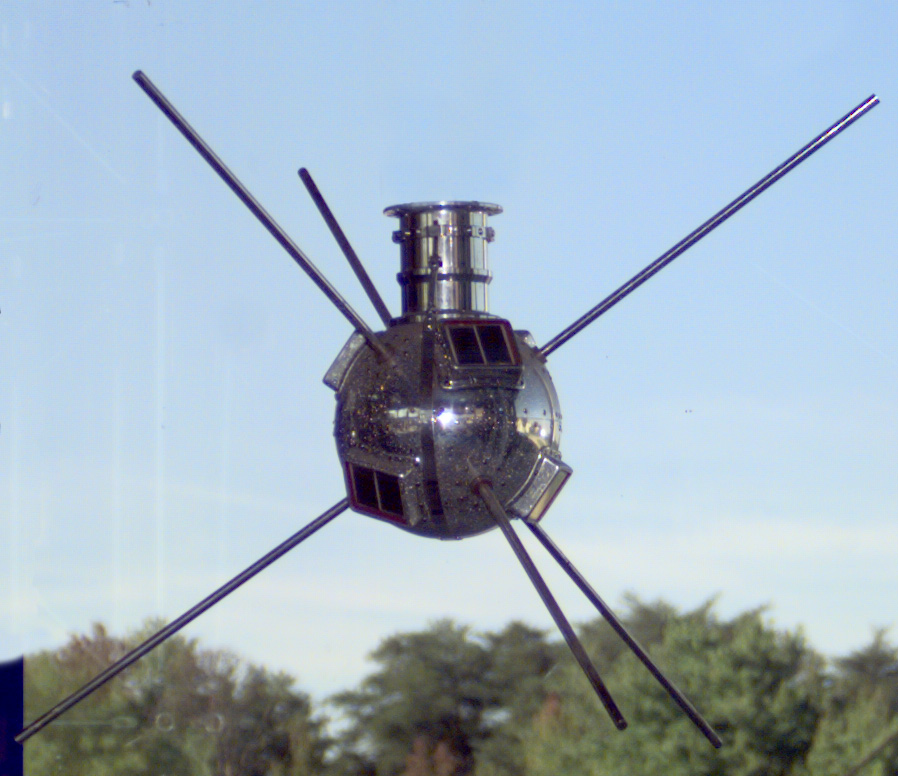Fifty years ago today — April 2, 1963 — two quite different launches happened in the U.S. and the Soviet Union.

(Explorer 17. NASA image.)
The U.S. launched Explorer 17, also known as Atmospheric Explorer A, the first in a series of satellites to study the upper atmosphere. The satellite launched in the late evening — already April 3rd, UTC — on a Thor-Delta rocket out of Cape Canaveral, and operated until its batteries failed in July 1963.
Earlier in the day, the Soviet Union had launched Luna 4, the “first successful spacecraft of their ‘second generation’ lunar program.” It launched from the Baikonur Cosmodrome on a Molniya rocket — a Modified SS-6 (Sapwood) ICBM. Interestingly, the USSR did not reveal Luna 4’s intended mission, but “was announced it would travel to ‘the vicinity of the Moon.'”
Rather than being sent on a straight trajectory toward the Moon, the spacecraft was placed first in a 167 x 182 km Earth orbit and then was rocketed in a curving path towards the Moon. Luna 4 achieved the desired initial trajectory but during trans-lunar coast the Yupiter astronavigation system failed (most likely due to thermal control problems) and the spacecraft could not be oriented properly for the planned midcourse correction burn. Communications were maintained, but Luna 4 missed the Moon by about 8400 km (sources give reports of 8336.2, 8451, and 8500 km) at 13:25 UT on 5 April 1963 and entered a 89 250 x 694 000 km equatorial Earth orbit. The spacecraft transmitted at 183.6 MHz at least until 7 April. The orbit is believed to have been later perturbed into a heliocentric orbit.
… It was speculated the probe was designed to perform a soft landing on the Moon based on the trajectory and on the later attempted landings of the Luna 5 and 6 spacecraft, as well as the advances made over the 3 years since the successful Luna 3 flyby. (And the fact that a lecture program entitled “Hitting the Moon”, scheduled to be broadcast on Radio Moscow at 7:45 p.m. the evening of April 5, was cancelled.)
Before all of this happened, on this date 55 years ago President Dwight D. Eisenhower sent “draft legislation to Congress establishing the ‘National Aeronautics and Space Agency.'” The name was soon changed to the National Aeronautics and Space Administration. You can read more about NASA’s beginnings here.
Finally, 45 years ago today — April 2, 1968 — 2001: A Space Odyssey premiered at the Uptown Theatre in Washington, DC. This page includes a retrospective on its early run.

















